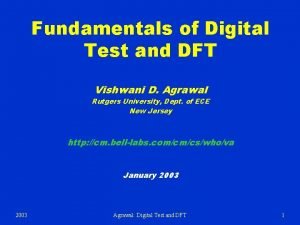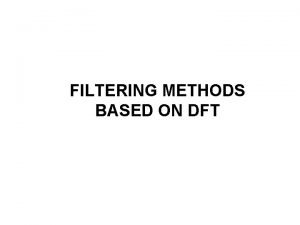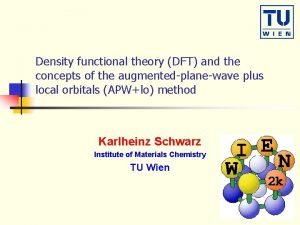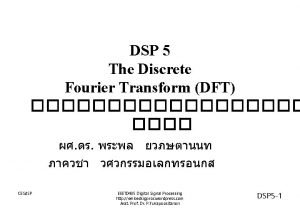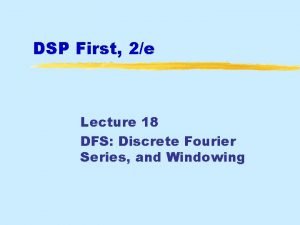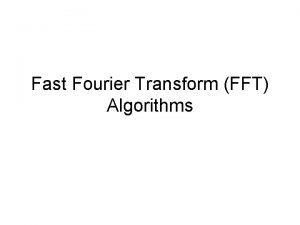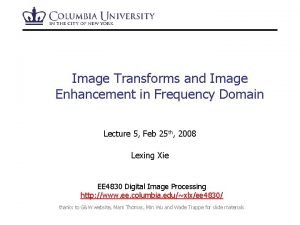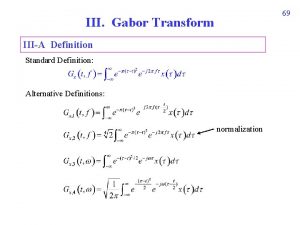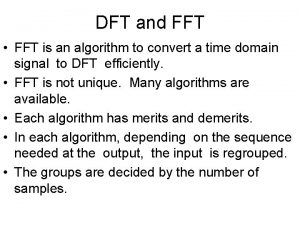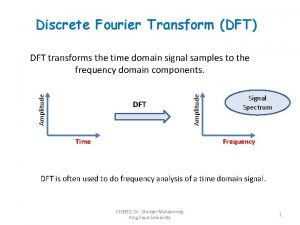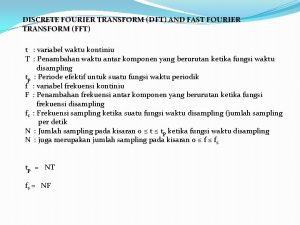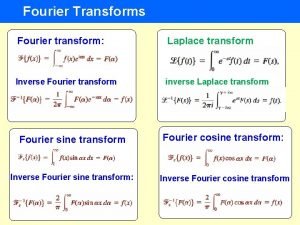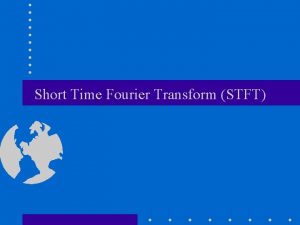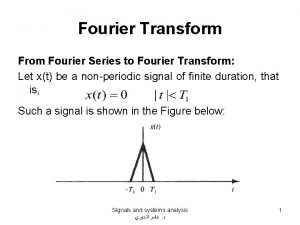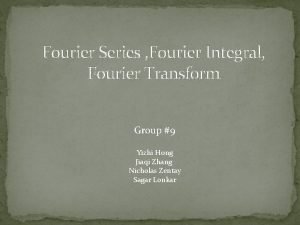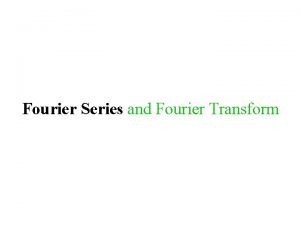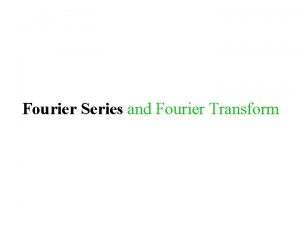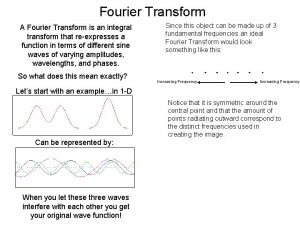The Fourier Transform the DFT Fourier transform Take














- Slides: 14

The Fourier Transform & the DFT • Fourier transform • Take N samples of from 0 to. (N-1)T • Can be estimated from these? • Estimate based on rectangular approximation of integral 1 Professor A G Constantinides

The Fourier Transform & the DFT • Estimate based on rectangular approximation of integral • Now take N samples of at multiples of • Note that is of period 2 Professor A G Constantinides

The Fourier Transform & the DFT • Then • i. e. DFT relationship where • has a DFT D(k) such that 3 Professor A G Constantinides

The Fourier Transform & the DFT • How good is the estimate? • Let period of DFT operation be • Hence 4 • Similarly • There are two approximations involved in estimating • (i) is sampled leading to aliasing for non-bandlimited signals. • (ii) N samples only are retained Professor A G Constantinides

The Fourier Transform & the DFT • Point (i) : Sampling yields a new signal • With Fourier Transform • i. e. it may be a poor approximation to • Point (ii) : Retaining samples 0, N-1 is effectively windowing the data by 5 Professor A G Constantinides

The Fourier Transform & the DFT • Fourier Transform of window • Actual signal used in DFT is • i. e. this leads to convolution in frequency domain 6 Professor A G Constantinides

The Fourier Transform & the DFT • Note that • Ie is the estimate of 7 Professor A G Constantinides

The Fourier Transform & the DFT • Since is periodic with period its contributions to above may be taken over the entire domain as • i. e. the estimate is the convolution between the desired transform and 8 Professor A G Constantinides

The Fourier Transform & the DFT • The main lobe of is of width • hence convolution "smears" or "blurs" a step to the same width. • For greater bandwidth, must be increased (or T decreased). • To increase resolution we must decrease • for a fixed T this implies N must increase. 9 Professor A G Constantinides

The Fourier Transform & the DFT • Frequency resolution is the Minimum separation between two sinusoids, resolvable in frequency • Because of the convolution two impulses in frequency will be smeared, so that if they are to be resolvable they must be separated by at least one frequency bin ie 10 Professor A G Constantinides

The Fourier Transform & the DFT • If maximum frequency in the signal is and the required resolution is then • thus • For example (rad/s) • then 11 Professor A G Constantinides

The Fourier Transform & the DFT 12 • In practice is required within a prescibed resolution and bandwidth. • • Let be limited to , and the required resolution to be or better. • • Then • • Hence i. e. Professor A G Constantinides

The Fourier Transform & the DFT • Ie • If is assumed to be of duration then again • Set 13 • and Professor A G Constantinides

The Fourier Transform & the DFT • i. e. 14 • Hence where time – bandwidth product of signal Professor A G Constantinides
